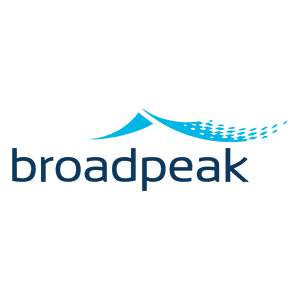SEGMENTS:2024 Speakers
SEGMENTS:2024 Speakers
SEGMENTS:2024 Schedule

SEGMENTS:2024
Date And Time
2024-02-14 @ 06:00 PM
Registration End Date
2024-02-14Event Types
Event Category
Share With Friends
Speaker Schedule
-
2024-02-14Day 1
Welcome
Jason Thibeault, Executive Director of the Streaming Video Technology Alliance, opens the conference. He will cover house keeping, the schedule, and spend a little time talking about key findings from a newly published research report on streaming operations.
Keynote
Fireside chat with JT about Super Bowl LVIII
 Sean McCarthy
Sean McCarthy

Hybrid Ultra & Low Latency Media Processing Workflows
The streaming industry is always split between two colliding priorities: latency and stability. Typically, to achieve one, you must sacrifice the other in some way. Since there is no single technology (at the moment) to accomplish both priorities at a high level, sometimes technologies must be mixed. What is needed is the latency of WebRTC, but the stability, scale, and feature set of http streaming. To achieve this, we will explore the approach of a hybrid solution intermixing multiple streaming formats into a single solution at the player. In this talk, we will go into some of the challenges of a unified real time and low latency streaming workflow, as well as some of our potential solutions.
 Phil Moss
Phil Moss

Secure DRM-ized content re-encryption within Trusted Execution Environments
With the advent of public and private cloud computing, many video workloads moved from dedicated servers to containers or virtual machines relying on disaggregated storage. Media packaging, e.g., for VoD, nPVR or cDVR content, has the specificity that it receives, and processes unprotected valuable video content in the clear before applying proper formatting and content encryption (DRM) adapted to user devices. Moving away from classical perimeter security models (applicable to on-premises dedicated hardware) can be problematic due to the increased exposure of shared computing and disaggregated storage. In this presentation, we discuss how to exploit trusted execution environment provided by software or hardware enclaves during the video packaging process. Example of such trusted execution environments are Intel's Software Guard Extension (SGX) or AWS Nitro Enclaves. The protected enclaves ensure that neither the media asset nor the content encryption keys are accessible in clear-text, therefore preventing any leak of content to unauthorized parties, even when the host machine or the storage devices are compromised. We discuss potential attacks and mitigations and the implications on the CPIX, that needs to be extended with remote attestation methods.
 Christoph Neumann
Christoph Neumann

SVTA Working Group Update: Advertising
The SVTA Advertising Working Group will provide a brief update on their current projects.
 Zachary Cava
Zachary Cava

SVTA Working Group Update: Edge Storage
The SVTA Edge Storage Working Group will provide an update on current projects.
Breaking Vendor Dependency Through Orchestration
Transcoding solutions tend to depend on external vendor solutions, and largely utilize ffmpeg under the hood. As a result, modifications can be costly, take unprecedented time, or both. Alternatively, solutions can be developed in house, which require resources and can impact timelines for other initiatives. As a result, I researched how open source orchestration frameworks (of which there are many) can be leveraged to create a variety of transcode systems using ffmpeg. The result was a system that can support multiple transcode pipelines for various use cases, integrate packagers as needed, and scale up ffmpeg nodes as needed. In summary, orchestration allows for low code, or no code, modifications to transcode pipelines, scales effectively, and allows for easy modifications to support needs as they arise (without impacting existing pipelines). This presentation will include a demonstration of how this was architected using Camunda, or Netflix Conductor, orchestration frameworks, and demonstrate how to make modifications to a transcode pipeline with no code changes required.
 Bradley Burciaga
Bradley Burciaga

Online Bitrate ladder prediction for Adaptive VVC Streaming
Traditional per-title encoding methods yield lower storage and delivery costs and improved Quality of Experience (QoE), with an additional cost of convex-hull computation. However, the streaming industry can reduce its carbon footprint and energy consumption by minimizing the processing time for per-title bitrate ladder estimation, encoding, and decoding. This is particularly important as environmental consciousness grows and companies seek to adopt greener practices. This talk highlights energy-aware, perceptually-aware per-title encoding approaches adapted for adaptive versatile video coding (VVC) streaming applications. Content- and JND-aware bitrate ladders are estimated using low-complexity features based on Discrete Cosine Transform (DCT) energy, set of encoding parameters (e.g., resolutions, framerates, presets, etc.) supported by the streaming service provider. This talk further introduces the open-source implementations of the proposed methods, and discusses the objective results, in terms of improved compression and energy efficiency.
 Vignesh V Menon
Vignesh V Menon

Revolutionizing Video Streaming: The Rise of Content-Aware Encoding and the Impact of the Optimizer Framework
The surge in video streaming, driven by the demand for anytime, multi-device access, has escalated bandwidth use and costs for service providers. To combat this, they are adopting content-aware encoding (CAE), which reduces bitrates and improves video quality, proving crucial in the industry. Additionally, the video industry has evolved from per-title to sophisticated CAE methods, including real-time network traffic-based systems, enhancing Advanced Video Coding (AVC) usability. Newer codecs like HEVC and AV1 are now supplanting AVC, with service providers exploring CAE and Content Adaptive Streaming (CAS) to further optimize bandwidth and video quality. The Optimizer is an advanced Content-Aware Encoding (CAE) framework that enhances video streaming services. Utilizing dynamic coding technology, it efficiently reduces bitrates while maintaining or improving video quality for live streaming and VoD services. The framework employs a machine learning-based approach for one-pass encoder parameter prediction, optimizing settings like constant rate factor and reference frames. Its real-time feedback mechanism adapts encoder settings based on scene analysis and quality metrics. Tested on a diverse video database, the Optimizer significantly lowers bitrates, up to 70%, ensuring high-quality streaming with proven stability in industrial applications.
 Thierry Fautier
Thierry Fautier

BREAK

WebRTC DRM Panel
In this panel, moderated by SVTA Executive Director, Jason Thibeault, we will discuss the challenges associated with WebRTC and DRM and some solutions around how to address those challenges.
SVTA Working Group Update: Immersive Video
The SVTA Immersive Video Working Group will provide updates on current projects.
SVTA Working Group Update: Live Streaming
The SVTA Live Streaming Working Group will provide updates on current projects.
Unifying Real-Time Communications and Content Delivery with Media-over-QUIC Transport
OTT live sports has led sports broadcasting to a new level. Yet, there are still some challenges. For example, nobody wants to hear a neighbor’s cheers when a goal is scored before seeing it on the screen, making low-latency transport and playback indispensable. Synchronization among all viewing devices and social media feeds is also essential. A year ago, the IETF started developing a QUIC-based low-latency delivery solution for media ingest and distribution. The Media-over-QUIC work is still in its infancy but could be a game-changer. In this talk, we will discuss the architectural design issues and present results from our implementation.
 Zafer Gurel
Zafer Gurel

How new compression technologies bring Cloud Gaming to the masses
Delivering top-notch experiences demands overcoming bandwidth and latency challenges. We'll delve deep into these issues, exploring why advanced codecs often fall short. The talk equips you with an understanding of how MPEG-5 'low complexity' compression, addresses bandwidth and latency bottlenecks, enabling scalable pixel streaming at viable data rates, and unlocking a broader market. Whether you're a gaming enthusiast, developer, or industry professional, you’ll get valuable insights into the evolving cloud gaming landscape, gaining the knowledge to contribute to industry growth and innovation.
 Guendalina Cobianchi
Guendalina Cobianchi

Open Caching in Low Bandwidth Network Conditions
At IdeaNova, we embraced OCS-RS to build our own implementation of dCDN, suitable for the aviation industry. My presentation will give users insight into our solution, which includes: flexible and convenient platform for making code enhancements using docker, improved performance to support byte range requests, improved security using https support and DRM, fixed several issues. All of the above have been contributed to the common repository to be used and enhanced by the rest of the community. We have also completed successful integration with our player and implemented support for DRM content playback. We performed the first successful integration of Open Caching with uCDN provided by Broadpeak. This is the first step of getting Inplay Edge rolled out to aviation industry in a new product offering at the end of this year. At this presentation you'll learn what it takes to provide open caching in low bandwidth network conditions.
 Juraj Siska
Juraj Siska

Lunch

Piracy and CDN Leeching: How the Next-Generation Tokens Will Make CDN Piracy-Proof
Stealing content directly from the Content Delivery Network (CDN) of legitimate content providers has become too easy. It is time for CDNs to join the fight against piracy, rather than turning a blind eye to the issue. Streaming security experts have largely overlooked the role of the CDNs for a long time. To fight piracy, service providers have first focused on trusted hardware authentication from controlled set-top-boxes, and then implemented DRM for their OTT services. The CDN tokens have been designed to offer a light-weight optional security layer without compromising the streaming scalability, which is the baseline purpose of CDN servers. The adoption of software-based authentication to support mobile devices and the vulnerabilities of DRMs, epitomized by Widevine L3, have put CDNs in a more central position and calls for revisiting the design of CDN tokens. However, the streaming community has not agreed on a best practice yet. The CTA Wave working group, which standardizes a common CDN token format, has postponed the release of its first reference document. Meanwhile, the industry, in desperate need for a token, has designed multiple proprietary formats, which prevents re-use and multi-vendor delivery services. We also miss a reference study on the best implementation of time expiration in tokens. The community distinguishes short-lived tokens (which either have a short expiration time or refer to a small number of consecutive assets) and long-lived tokens (which either have a long expiration tine or refer to a long series of consecutive assets). In this talk, we will introduce the best practices with respect to the state-of-the-art work such as CAT. We will discuss the concept of mixed-lived token, which could make pirate operations more difficult, and the changes it would require from content providers, video players, and CDN servers
 Gwendal Simon
Gwendal Simon

SVTA Working Group Update: Measurement/QoE
The SVTA Measurement/QoE Working Group will provide updates on current projects.
 Abdul Rehman
Abdul Rehman

 Sean McCarthy
Sean McCarthy

SVTA Working Group Update: Metadata
The SVTA Executive Director, Jason Thibeault, will provide updates on current projects.
Best Practices for Streaming Mass Live Events - A Case Study
This presentation will review best practices for live streaming delivery on scale using a case study format based on Qwilt's operation experience supporting live events for major streaming platforms in various regions. Topic covered will include capacity planning, multi-CDN envionments, load balancing, quality measurement, real time monitoring, etc.
 Gautier Demond
Gautier Demond

Over-the-Air Multicast CDN - Reality or Fantasy?
There is wide acknowledgement across the industry that multicast technologies are required to address the escalating scaling and infrastructure cost challenges presented by the use of unicast delivery for large live streaming and software download events. This session features a fireside chat with Glenn Goldstein (former Viacom and Lumen CDN) and Omar Ramadan (Facebook Connectivity, Blockcast) discussing the viability of leveraging over-the-air transports such as ATSC-3.0, Satellite, and 5G to securely broadcast video and data in real-time reliably and securely using C2PA content object authentication with a distributed metadata layer. They will also discuss the design space of new business models, including a marketplace for multi-cdn caching and multicast capacity, and smart contracts that content providers and upstream CDNs can use to reward network operators and end users for sharing data and deploying cost-saving local infrastructure.
 Omar Ramadan
Omar Ramadan

The immersive future of entertainment is streamed
This presentation focuses on the technical complexities of deploying 6DoF truly immersive and photorealistic experiences necessary for applications such as Immersive Entertainment, XR and the Metaverse. It covers the critical aspects such as rendering processing power requirements, bandwidth limitations and device constraints, all in the context of user needs and expectations. It highlights how only split computing and ultra-low-latency streaming can solve the problem at scale and make these experiences available to the masses. With a focus on the role of standardized codecs such as HEVC, and enhancements such as MPEG-5 LCEVC, the presentation analyzes the considerations necessary for deployment and implications on scalability, sustainability, energy efficiency. The audience can expect a glimpse on the future of entertainment and how it will be streamed!
 Guido Meardi
Guido Meardi

Here. There. Everywhere: High-quality streaming for hard to reach subscribers
As the licensing of live sporting events to OTT providers continues apace, the challenge of delivering live events at scale and high quality to the entire audience has not diminished. In this talk we will look at the challenges of at-scale live streaming, consider how data flows impact upstream connectivity and how ISPs serving smaller populations have a particular challenge to solve, when the CDNs delivering the content are expecting them to have the capacity in place to do so. Looking at the challenge of verifying and validating access to the end consumer in more remote and extra-urban ISPs, we will preview a case study on the impact of live streaming and the benefits of embedded and edge CDNs.
BREAK

Architectures for Multi-CDN Switching
In this talk, we will report the results of study conducted by SVTA Players and Playback SG on architectures for multi-CDN switching. Specifically, we will review different architectures and solutions for CDN switching that have been submitted in this work, including: client-based dynamic CDN load balancer solution, server-side solution based on HLS/DASH content steering, and edge-based implementation of HLS/DASH content steering methods. We will describe cons and pros of such different architectures and report preliminary results of performance study of these solutions considering standards set of QOS/QOE performance metrics for streaming (observed throughput, start-up time, buffering events, buffer ratio, etc.). We will conclude with a survey of current state of deployments of HLS/DASH content steering and alternative solutions across different platforms, and available open-source implementations.
Latest advances in the development of the open-source player dash.js
In this presentation, we introduce the latest additions and improvements to dash.js, a free, open-source MPEG-DASH player. dash.js is a prominent option for implementing commercial, production grade DASH-based applications and products. Moreover, dash.js serves as a reference client for academic purposes. We will focus on features such as DASH content steering and support for AdaptationSet switching. Moreover, we dive into functional testing as a way to automatically verify basic player functionalities such as play, pause, seek. In addition, we introduce mechanisms to programmatically examine the ABR behavior of dash.js
 Daniel Silhavy
Daniel Silhavy

Coming soon: new low-latency low-delay and alternate content extensions in 6th edition of MPEG DASH
The upcoming 6th edition of MPEG DASH brings several new features, such as support for partial segments and presentation insertion events. These names sound impenetrable, but what they offer is a host of new and exciting capabilities, such as low-delay operation, LL-HLS compatibility, and new flexible event-based alternate content mechanism compatible with the new HLS interstitials. We will start with introducing these extensions and discussing both what they are and what were the design considerations bringing them to life.
 Alex Gilaldi
Alex Gilaldi

SVTA Working Group Update: Networking and Transport
The SVTA Networking and Transport Working Group will provide updates on current projects.
 Gwendal Simon
Gwendal Simon

SVTA Working Group Update: Open Caching
The SVTA Open Caching Working Group will provide updates on current projects.
Mastering the Game: Elevating the QoE for Live Monitoring With Real-Time Content Monitoring
While streaming services have revolutionized the way viewers consume media content, delivering a high-quality live streaming experience is no simple feat. This presentation will explore the current hurdles faced by streaming companies in providing a superior QoE for live streaming, with a focus on compression artifacts, audio issues, and ad insertion challenges. Attendees will learn how comprehensive content monitoring — at all critical points in the video processing and delivery path — is essential for addressing these issues, and enables streaming service providers to deliver top-tier live content that meets viewers’ ever-increasing expectations while maximizing revenues.
Precision Engineering: Examining Video Quality Metrics Perception in Live Event Production
In the dynamic milieu of the live events industry, undergoing unprecedented growth, the scrutiny of video quality metrics emerges as a linchpin for delivering top-tier content to discerning viewers. Our expedition into the interpretation of objective metrics, complemented by pragmatic insights drawn from flagship events like the FIFA World Cup, underscores the pivotal significance of comprehending human eye perception and conducting autonomous analyses. With the demand for immersive live streaming experiences reaching new heights, acknowledging the nuances of video quality across diverse workflow stages becomes imperative. By amalgamating both human eye perception analysis and autonomous metric evaluation, content providers can enhance the caliber of their live events, ensuring a seamless and enthralling viewing experience for their audience. This holistic approach aligns seamlessly with the industry's relentless pursuit of excellence in the ever-evolving realm of live events. This presentation aims to provide a holistic view of interpreting video quality metrics in real-world scenarios, particularly in the context of live events like FIFA World Cup.
 Victoria Tuzova
Victoria Tuzova

How we built the CMCD 101 Course for the SVTA Universty
This year at Qualabs, we created the CMCD 101 course, spurred by JT's request following several projects we did at the MonteVIDEO Summer Camp focused on CMCD. We know that SVTA University is a significant project for SVTA, which requires everyone at SVTA to help create incredible content! In the past, Qualabs has created many internal courses to train over 50 people in various technologies related to the world of video, but this challenge was different due to its 100% asynchronous nature. In this talk, I'd like to share how we put together the course, the steps we followed, how we conducted beta testing, and try to ignite the teaching spark that we all have inside! At the end of the day, those of us who love teaching know how rewarding it is to see another person empowered with new knowledge.
 Nicolás Levy
Nicolás Levy

BREAK

SVTA Working Group Update: Players and Playback
The SVTA Players and Playback Working Group will provide updates on current projects.
SVTA Working Group Update: Privacy and Protection
The SVTA Privacy and Protection Working Group will provide updates on current projects.
CMCD Panel
This panel, moderated by SVTA Executive Director, Jason Thibeault, will explore the challenges of implementing and using CMCD as well as some of the solutions.
Content Fabric Distribution for FAST Channels & Live Video
With the explosive growth of FAST channels, content publishers are searching for ways to rise above the noise of traditional ad insertion with superior engagement and returns, and find alternatives to the expensive and complex pipelines of media clouds and CDNs that have trapped the industry for the last decade. Unlike legacy CDNs and media clouds, new approaches that leverage decentralized networking (such as the Eluvio Content Fabric) allow premium live and on-demand video to be published once and redistributed, with speed and low latency, simplicity, just-in-time personalization at scale, hyper-efficiency and cost-savings, in a manner that is transparent/tamper-free. The functions of a legacy CDN, media cloud and DRM/rights authorization service are replaced by a modern protocol built for video. This session will demonstrate how the Content Fabric delivers premium video with major TV broadcasters with end-to-end latencies under 3 seconds globally to standard streaming clients, and provides a complete full-featured media stack to publish, store and deliver premium live, PVOD, and FAST Channel streaming at scale, including personalization, access control, content protection and proof-of-engagement.
 Michelle Munson
Michelle Munson

Happy Hour
SEGMENTS:2024 Happy Hour

Have a problem/solution-focused presentation you think attendees would appreciate? Just fill out the form below by January 5th, 2024 to be considered. Speakers will be evaluated by our speaker-selection committee (part of the SEGMENTS committee at the SVTA) and, if selected, will be listed here on the Speakers page prior to the event. You can see a list of past speakers and participating companies on the main SEGMENTS conference website.
"*" indicates required fields
Past SEGMENTS Speakers
Below are speakers who have presented to SEGMENTS audiences in the past.













































































